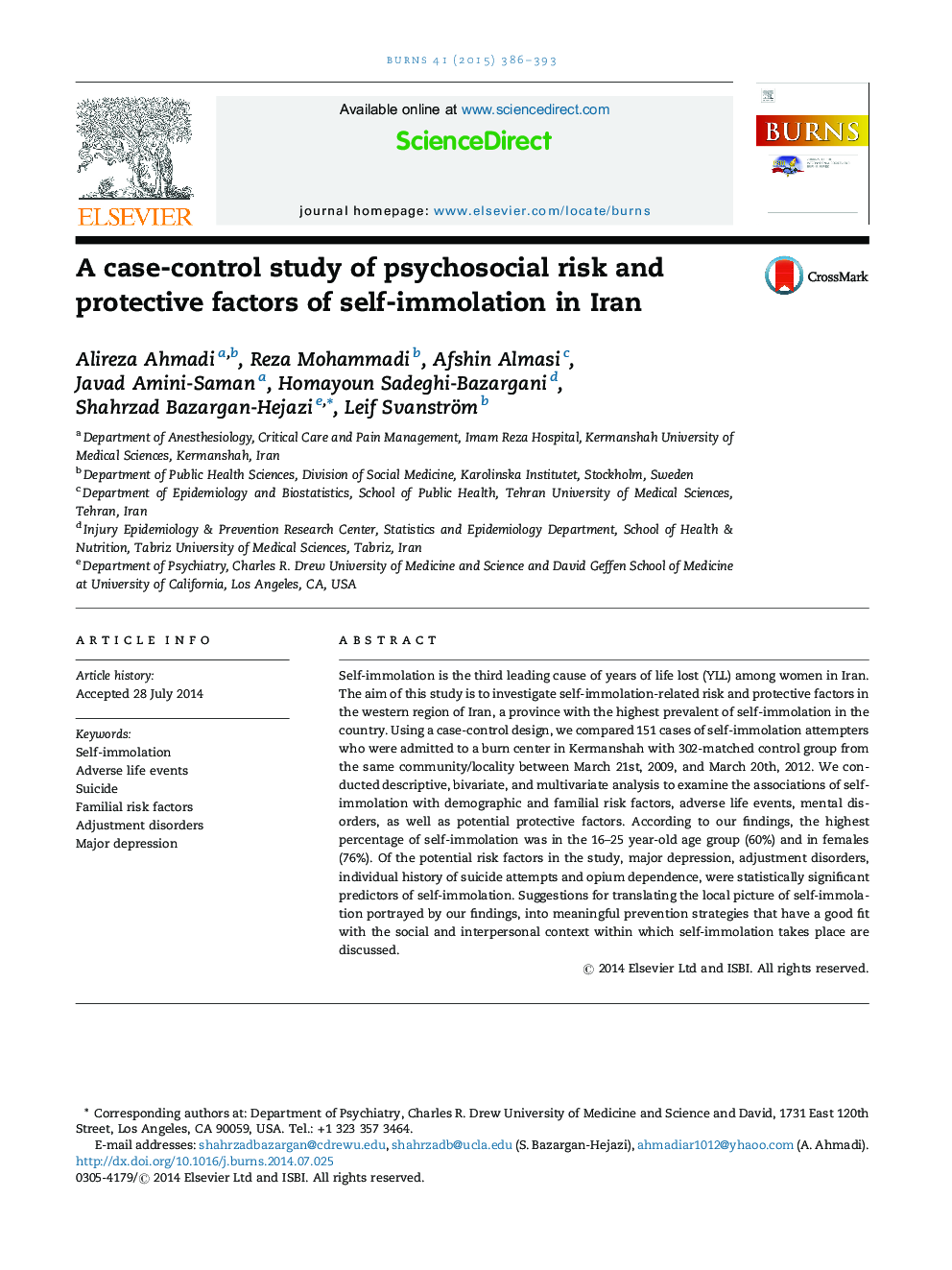| Article ID | Journal | Published Year | Pages | File Type |
|---|---|---|---|---|
| 3104457 | Burns | 2015 | 8 Pages |
•Adjustment disorders increase the risk of self-immolation among female patients.•Opium dependence increased the risk of self-immolation only in males.•Predictors of self-immolation among the married participants include marital conflict and spousal addiction.•Predictors of self-immolation among the unmarried participants include problems with parents, parents’ death, and parents’ addiction.
Self-immolation is the third leading cause of years of life lost (YLL) among women in Iran. The aim of this study is to investigate self-immolation-related risk and protective factors in the western region of Iran, a province with the highest prevalent of self-immolation in the country. Using a case-control design, we compared 151 cases of self-immolation attempters who were admitted to a burn center in Kermanshah with 302-matched control group from the same community/locality between March 21st, 2009, and March 20th, 2012. We conducted descriptive, bivariate, and multivariate analysis to examine the associations of self-immolation with demographic and familial risk factors, adverse life events, mental disorders, as well as potential protective factors. According to our findings, the highest percentage of self-immolation was in the 16–25 year-old age group (60%) and in females (76%). Of the potential risk factors in the study, major depression, adjustment disorders, individual history of suicide attempts and opium dependence, were statistically significant predictors of self-immolation. Suggestions for translating the local picture of self-immolation portrayed by our findings, into meaningful prevention strategies that have a good fit with the social and interpersonal context within which self-immolation takes place are discussed.
